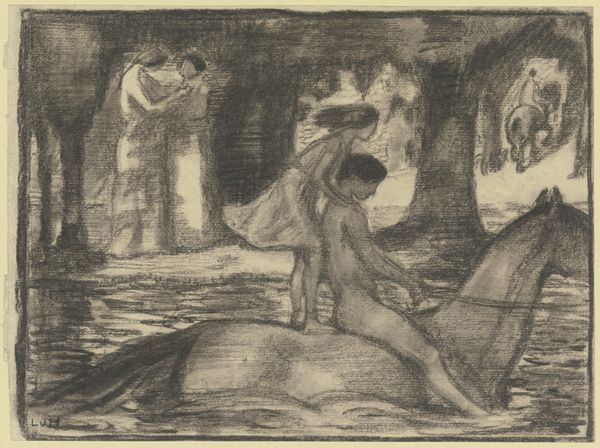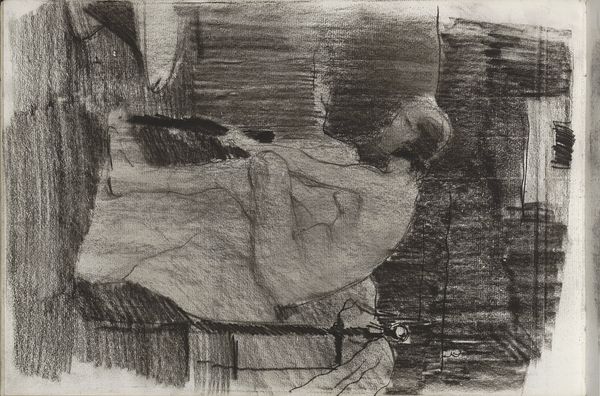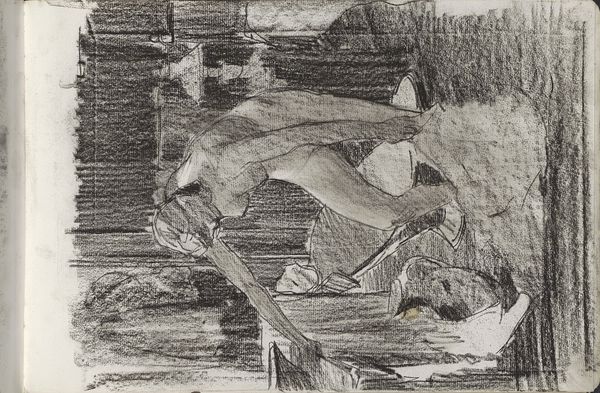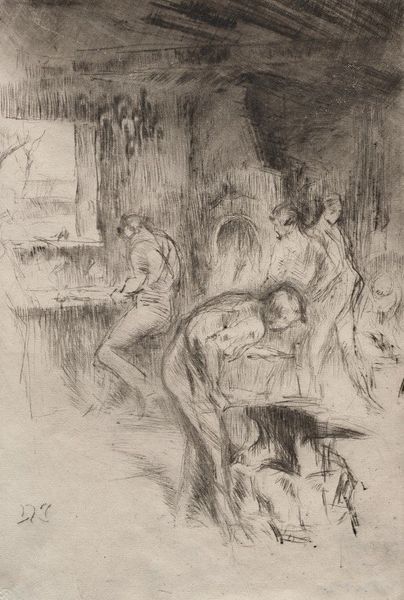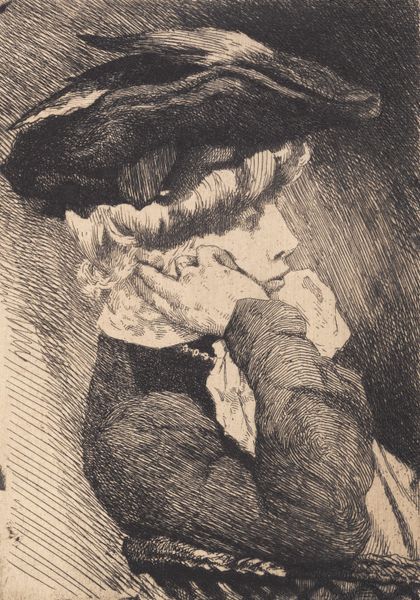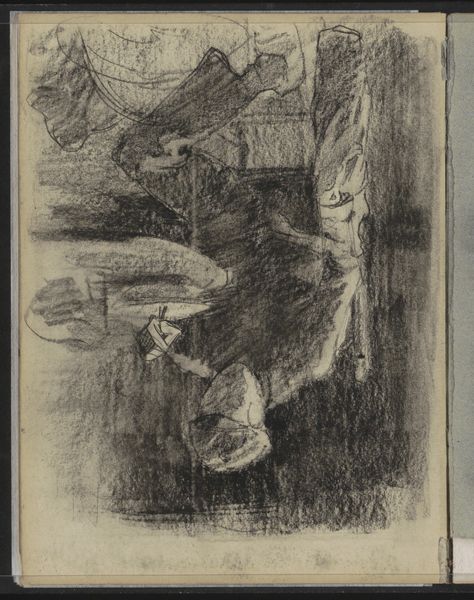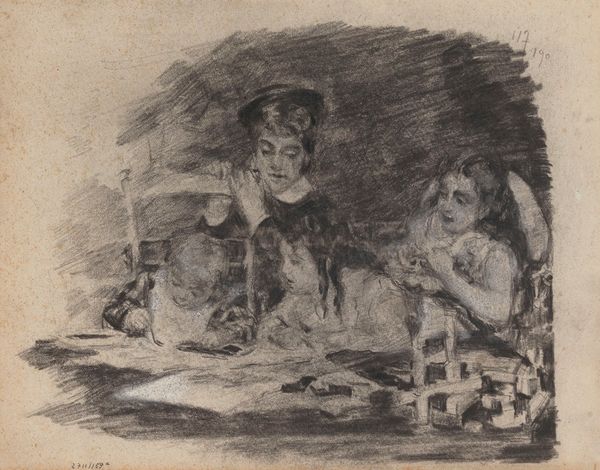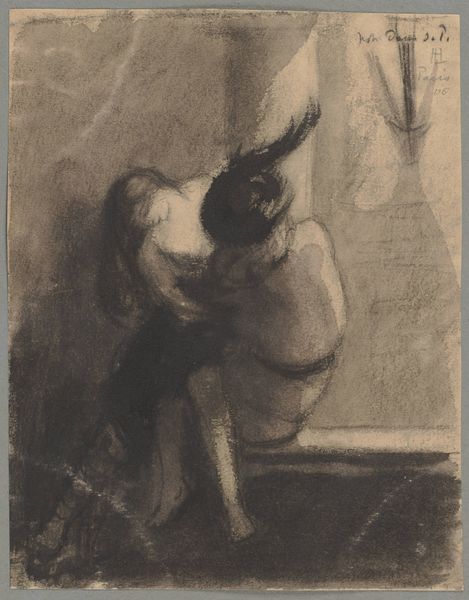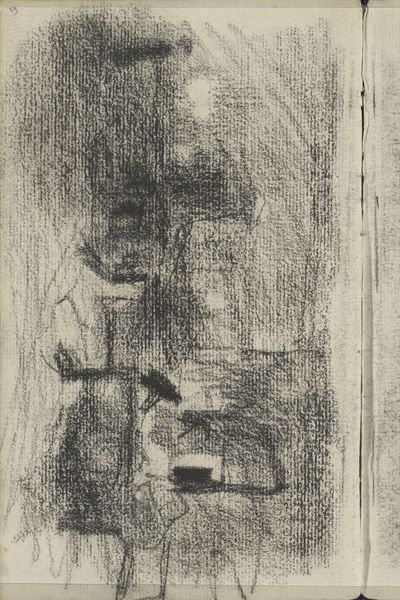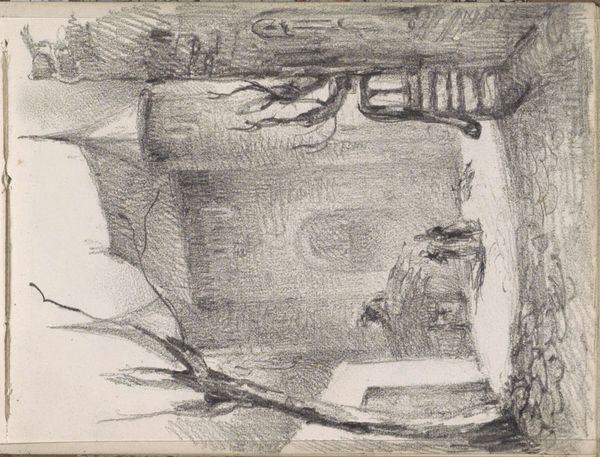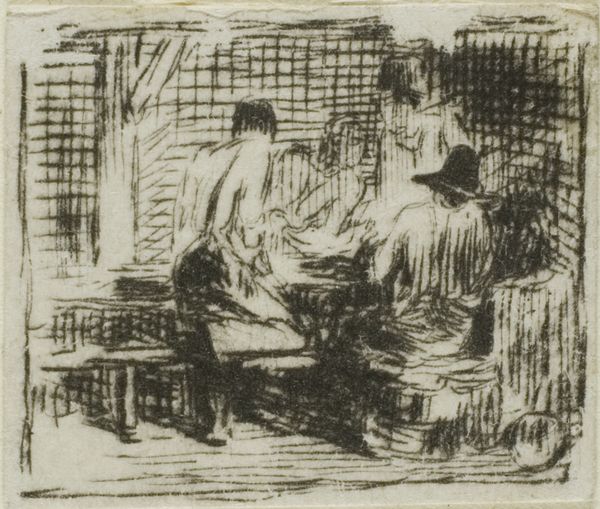
drawing, print, charcoal
#
portrait
#
pencil drawn
#
drawing
# print
#
impressionism
#
pencil sketch
#
charcoal drawing
#
figuration
#
pencil drawing
#
intimism
#
charcoal
#
charcoal
#
graphite
Dimensions: 119 mm (height) x 161 mm (width) (bladmaal)
Edgar Degas made this print, titled "Intimacy," using etching, a printmaking process that reveals much about the social context of artmaking at the time. Etching involves coating a metal plate with a waxy, acid-resistant ground, then drawing into it with a needle to expose the metal. The plate is then immersed in acid, which bites into the exposed lines, creating grooves. Ink is applied, then the surface wiped clean, leaving ink only in the etched lines. Finally, the plate is pressed onto paper. The processes create a textured, tonal image, suited to intimate scenes such as this one. Printmaking was a way of democratizing images and ideas, bringing art to a wider audience beyond wealthy patrons. Degas, known for his scenes of modern life, used this medium to explore private moments, blurring the lines between fine art and accessible craft. Appreciating the labor-intensive techniques behind this image helps us to understand its complex social significance.
Comments
statensmuseumforkunst almost 2 years ago
⋮
Degas’ figures are usually characterised by a distancing realism, by a vein of observation whose cool intensity seems less fascinated by the body’s erotic aura than by its simple, concrete existence as an object. This gaze appears to be a negative one; a gaze whose lack of mercy corroborates claims of Degas’ misogyny. Socio-cultural interpretations of women Degas’ women are worn-out prostitutes, tired washerwomen, or unsightly dancers also bearing the marks of their profession. Degas’ choice of types and the manner of his presentation opens up his renditions of women to socio-cultural interpretations. They become images of social constructs, the constraints of which defines them and marks them through the lives they lead. A socio-cultural coercion In this monotype, however, the female figure clearly and irresistibly radiates an erotic voluptuousness that Degas’ art can also include. The picture’s masquerade-like feel, its similarity to a stage wardrobe, defines the woman in relation to the waiting man, his gaze fixing her above the subtle sign of his cane. The space itself becomes an image of anticipated union, enfolding this relationship that has been brought about by socio-cultural coercion.
Join the conversation
Join millions of artists and users on Artera today and experience the ultimate creative platform.
